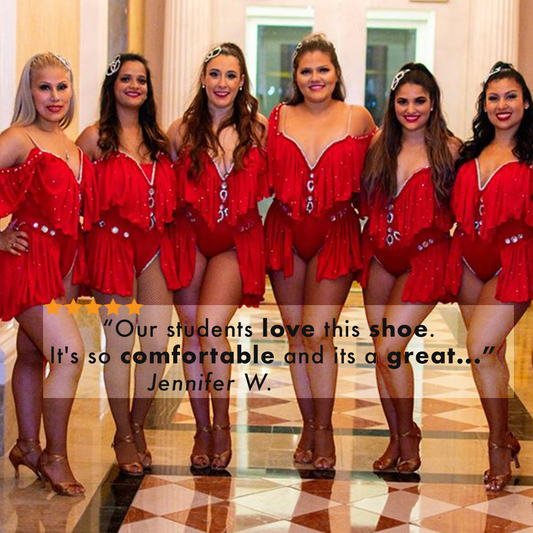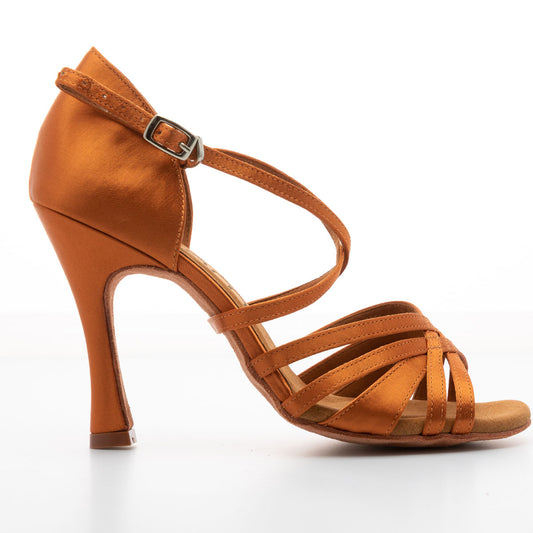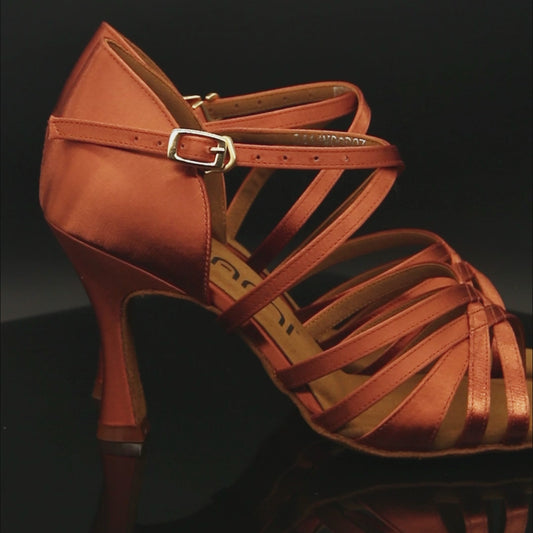
When it comes to dance shoes, choosing the right material can make all the difference in comfort, durability, and performance. For years, leather has been the gold standard in dance footwear—but is it really the best choice? With modern advancements, vegan PU (polyurethane) materials are proving to be a superior alternative, offering better breathability, flexibility, and longevity.
If you’re trying to decide between leather and PU for your next pair of dance shoes, let’s break down the pros and cons of each.
1. Breathability: Which Material Keeps Your Feet Cool?

Leather: Natural, But Limited
Leather is a natural material, meaning it has some breathability. However, most dance shoes use treated or coated leather, which reduces airflow. Once sweat is absorbed, leather struggles to release moisture, leaving your feet feeling damp and overheated after long hours of dancing.
Vegan PU: Designed for Airflow
Vegan PU, especially when combined with engineered mesh panels, is designed for maximum airflow. Unlike leather, it doesn’t trap heat or moisture, keeping your feet dry and cool. Plus, moisture-wicking linings prevent sweat buildup, making vegan dance shoes a better option for long dance sessions.
Winner: Vegan PU – More effective at keeping your feet cool and dry.
2. Durability & Maintenance: Which Material Lasts Longer?

Photo Credit: Amy's Shop UK
Leather: Durable, But High-Maintenance
Leather is naturally durable, but it requires regular conditioning to prevent cracking, drying, or stiffness. It’s also highly sensitive to moisture and humidity, meaning a little water or sweat can ruin your shoes over time.
Vegan PU: Low-Maintenance & Long-Lasting
Modern PU materials are resistant to cracking, peeling, and stretching. Unlike leather, PU does not require conditioning and holds up well under various environmental conditions. It also resists scuffs and stains, making it much easier to maintain.
Winner: Vegan PU – More durable, water-resistant, and easier to maintain.
3. Flexibility: Which Material Moves Best With You?

Leather: Requires Break-In Time
Leather starts off stiff and rigid, requiring a break-in period before it conforms to your foot. While it eventually softens, it never reaches the same level of flexibility as PU.
Vegan PU: Instant Flexibility
PU materials are engineered to be ultra-flexible from day one. This means no painful break-in period—just immediate comfort and freedom of movement. Whether you’re performing intricate footwork or deep bends, PU dance shoes move with you effortlessly.
Winner: Vegan PU – More flexible and dance-ready right out of the box.
4. Weight: Which Material Keeps You Light on Your Feet?

Leather: Heavier & More Structured
Leather shoes tend to be heavier due to their dense structure. While some dancers prefer this added weight for stability, it can slow down fast footwork.
Vegan PU: Feather-Light for Fast Footwork
PU materials are lightweight and agile, reducing foot fatigue and making it easier to execute fast-paced movements. If you dance styles like salsa, bachata, or kizomba, lighter shoes allow for quicker transitions and better endurance.
Winner: Vegan PU – Lighter weight equals less fatigue and better agility.
5. Ethical & Environmental Impact: Which Material is More Sustainable?

Leather: Not Vegan & Environmentally Costly
Leather is made from animal hide, which means it’s not cruelty-free. Additionally, the tanning process involves toxic chemicals, leading to environmental concerns like deforestation and water pollution.
Vegan PU: Cruelty-Free & More Sustainable
PU dance shoes are completely vegan, meaning no animals are harmed in their production. Additionally, PU manufacturing requires less water and fewer harmful chemicals compared to leather processing, making it a m…







